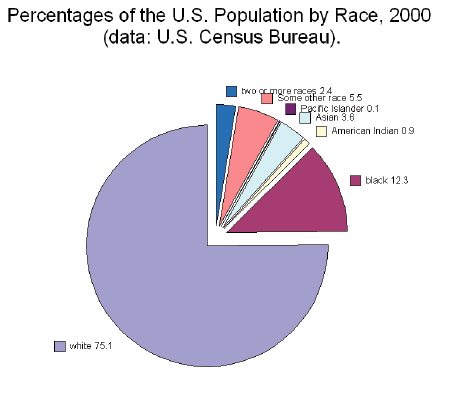By Carmen Blum (Opinion) –
There are currently six options on the United States Census Form concerning race. White- the race that, among others, people from the Middle East/ North Africa are suggested to choose, Black/African American, American Indian/ Alaskan Native- the race that people of Hispanic identification are suggested to choose, Asian, Pacific Islander, and finally the infamous Some Other Race.
One might ask why this system is flawed if it technically represents every race, and if there is also the option of choosing the “some other race.” The issue with the current system of race categorization is that it has caused many people, particularly those who identify as Middle Eastern, North African, or Hispanic, to either choose a race with which they do not identify, or identify themselves as “some other race.” This has forced them into self-otherization. According to Wiktionary, Otherization is the act of making or regarding a person or social group as alien, and unfortunately it has become a keystone in our country. By classifying a group of people into “others” it becomes easier to dehumanize them into one’s own biases. It is this action that throughout history has lead to mass violence against specific groups of people.

Self-otherization, on the other hand, is forcing people to see themselves as alien, through the pre-made labels which they must inflict upon themselves. As Al Batool Salman, a junior who immigrated from Damascus Syria, explained to me, having this inflicted upon you is less than a great experience. “Every time since me and my parents got here eight years ago, we are always the other in everything we do. When I first got here and had to fill out the forms, I felt confused when I didn’t see the Arabic or Middle Eastern choice in the race section, like am I not part of you guys?”
As for the option of “some other race,” this choice turns out to not actually be that much of a choice at all. When all of the census information is gathered, those who chose “some other race” are thrown in with one of the five pre-ordained races that the government recognizes the written in race to belong to. This action nullifies the choice to not be identified as a race that one doesn’t recognize themselves as.

Despite these issues the question remains, how is race decided? According to Wikipedia the most widely accepted way of deciding race is by grouping people together who share specific genetic markers, regardless of their geographical position. However several studies have shown that this method of classifying races, in many cases conflicts with the race that the individual actually identifies with. Interestingly enough, despite the government’s classification, Middle Easterners were not always classified as White. Before the Immigration Act of 1924, also known as the Asian Exclusion act, Middle Easterners were classified as Asian. However there was a petition to have the label changed to White to avoid Middle Eastern immigrants being kept out of the United States.
The word race itself has had a long journey of different definitions. It was originally used to describe groups of people that spoke the same language, from there it went on to describe people with different nationalities, and it wasn’t even until the 17th century that race began to be used in reference to physical features. Finally starting in the 19th century race began to be used to speak of genetic differences within the human population, the definition that is currently in use.

Unsurprisingly, the call for change on this topic is not a new one. Since the ‘80s there has been a surge in the desire for changing the classification of people from the Middle East and North Africa as White, when in society they are not recognized as such. Back in the 2010 census there was a silent protest of sorts in which people skipped the question completely, the movement was headed by the mantra “Check it Right, You Ain’t White.” According to USA Today, during the last few months of the Obama Administration there was a major push from the White House to create a Middle Eastern/ North African choice on the racial section of the census. The future of this movement is unsure with the new administration, however there is an increasing fear that the new option may be used to discriminate against the people that choose it. Specifically in light of the recent Muslim Ban being headed by President Donald Trump and his Senior Counselor Steve Bannon.
The future is an uncertain place when it comes to issues of racial otherization such as this, particularly in light of recent events. However it is times such as now, when we feel helpless and unable to control the world around us, that we, the members of this society, must realize that we are the only thing that can. The world must not stand by while history repeats itself in front of us. We must take action not only in this issue, but in the many battles for our fellow humans. As former President Barack Obama put it, “Change will not come if we wait for some other person or if we wait for some other time. We are the ones we’ve been waiting for, we are the change that we seek.”
